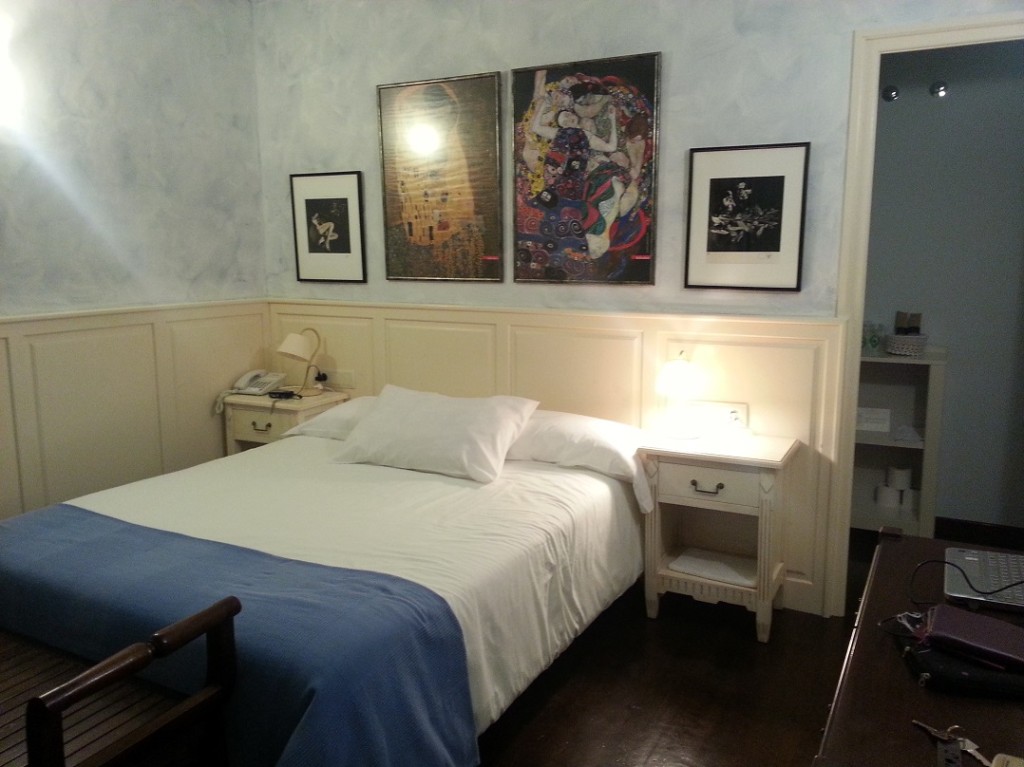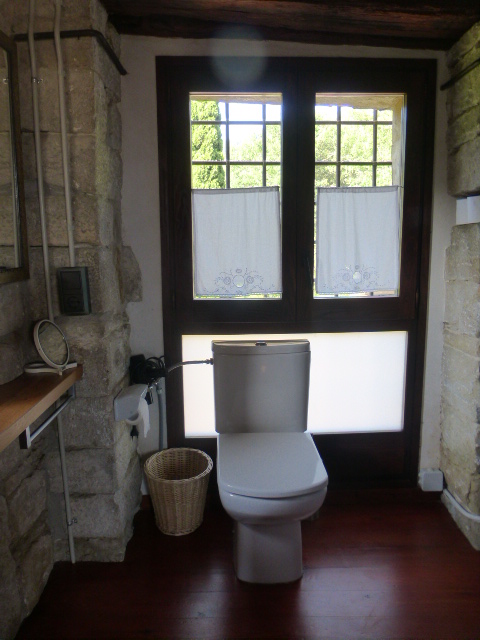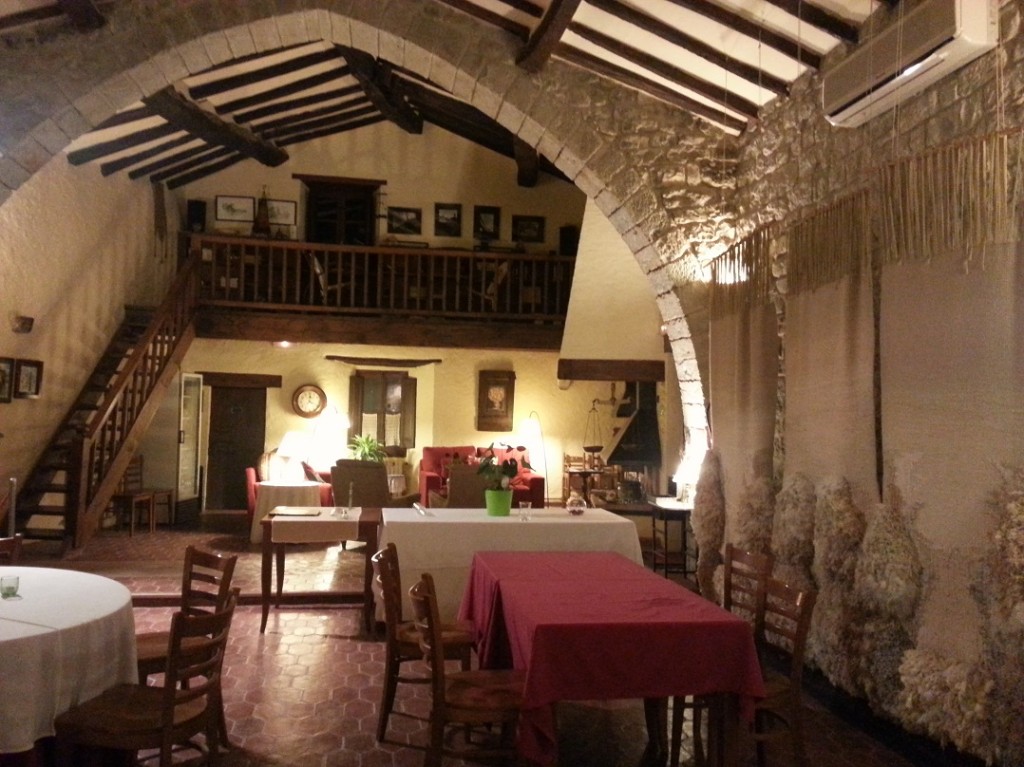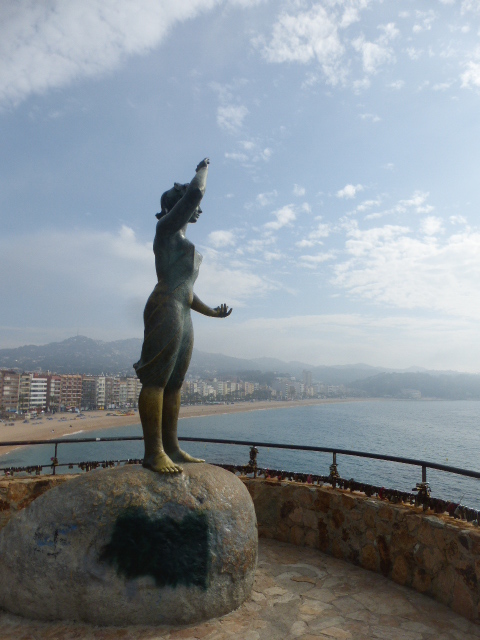
Pla de l’Estany, Catalunya
History and archaeology in the lakeside town of Banyoles
If the first day of our Live the History tour in Pla de L’Estany was all about the lake at Banyoles and food and wine, our second day was jam packed full of history.
Our first stop was at the cave complex of Serinyà. Beginning with a short video we were given a guided tour around the caves where we learnt how the prehistoric hunters and gatherers lived and we were also told how we know so much about their lives today from the evidence which is being collected at the site. And you get a quality tour because the guides are also the archaeologists and are passionate about the region and the history.
A series of caverns are set into the cliff above the river (a water source close by was a necessity) and we could stand in a cave where people from the Palaeothanic period once lived, and where they stored their supplies and buried their dead. We were invited to stand on the platform that the archaeologists work from and were shown how the area is divided up into square metres with cords and lines (imagine a game of Battleships) and then we went down to the area by the river for some demonstrations and workshops.
We shot arrows at a target to replicate hunting for our lunch, we saw how to made fire from pieces of flint and also how to fashion a ‘knife’ from a piece of flint. Maria painted on a wall with paints made from various minerals and we ate a lunch that had been cooked using food and methods from the prehistoric age.
After lunch we drove to a nearby village. There are 11 towns and villages in this area with 64 Romanesque churches. The church that we visited is always locked and nobody normally is allowed to enter, but somehow, the tourist offices of Costa Brava and Pla de l’Estany had pulled it off and it had been unlocked for us. It was a small church similar to many others, but this one had a thirteenth century fresco above the altar. Other frescos from the other churches have been preserved but this one is special because it s the only one still in situ in its original location.
And then we went back to the town of Banyoles where we visited the Neolithic village of La Draga. A reconstruction of some of the huts and their contents is displayed on the actual site where the remains have been unearthed. And what makes this place special and rare is that archaeologists are unearthing actual fibrous, material remains. The lake water flooded the site and then the chemical soup preserved the timbers, canes, thatch, ropes and everything else – all the materials which would normally decompose over time and which leave the experts guessing. Here they don’t have to guess because they have access to building materials and items that were last used 7400 years ago! Now that is seriously old!
The items are being excavated and carefully preserved in damp, humid conditions which replicate the lake water, but I was allowed to hold a piece of timber which once formed a part of a Neolithic hut, thousands of years ago. Marta was another person who was passionate about her subject of archaeology and excitedly showed us around the site. The following day we would be meeting up with her again for a tour of Banyoles town.
Dining Out
We had dinner in the local, family run Restaurant Can Xabanet in Banyoles. We had lots of different style Catalan dishes to try, and in fact the food just didn’t seem to stop coming. We compared a picture to the owner as he was when he first opened the restaurant and we ate and we chatted and we compared travel stories.
The restaurant has a very comprehensive menu with traditional Catalan dishes and made from the finest ingredients. They were presented in a fresh modern way in relaxing surroundings and with a fine attention to detail.
Sleeping
We spent 2 nights on the outskirts of Banyoles couresy of the Hotel La Sala de Camos.
The owners Vanessa, Mario and Vanessa’s dad Juan took over the existing hotel very recently but already it feels as if they have been there forever. Their warm welcome and attention to the little details will make your stay here memorable, relaxing and very special. There are just 8 bedrooms, all of which are individually styled and decorated and each is very different.
My room was tucked in the corner on the ground floor and it had views out over the lawn. The bathroom was very unusual and stretched out behind my room and further, with a bath tub set lengthways in an alcove and the toilet was at the furthest end and around the corner. It was a little sanctuary and a perfect place to unwind.
There are lots of little nooks and crannies at La Sala de Camos where you can sit and relax, with areas to read a book or watch TV. There are balconies and mezzanine floors, verandas and in the top bedroom, a shower and a toilet with a view! There is a lovely large swimming pool and lawns and flower beds, outdoor furniture and a little snug where you can sit and chat at one end of the veranda.
The house comes complete with a well – now covered with a glass panel, holes in the wall through which the priest used to spy on who was coming and going to the church, and which is within spitting distance from the house – in fact you can almost reach out and touch it – and terracotta pots on an outside wall for birds to nest in.
Just along the path is the home of a local family who live in the traditional rural way – that is – above their animals. Goats scramble in and out of the barn to their yard in the front and you have amazing views down across the trees.
We had a good breakfast at the Hotel La Sala de Camos and they will also prepare lunch and/or an evening meal if you let them know, and whilst it is set in the countryside, it is not far at all from the town.
The following day Marta led us on a walking tour around Banyoles. This pretty little lakeside town was founded by Benedictine monks after the French invaded the region whilst chasing the Moors out. One quirky feature in Banyoles are the irrigation channels which were cut all through the town to bring water from the lake. This water worked mills and provided sanitation and still runs along channels down the sides of the streets and under the roadways. Behind the building which houses the tourist offices on the main square you can see a water wheel in what was once the House of Millmen.
Flour was ground at this site in the 13 Century, courtesy of the water courses – and we also visited an ancient building – the Llotja del tint – that now houses the tint or dying museum. There were once deep pits in the floor where the dying process took place and it has a high Gothic vaulted ceiling to allow the toxic fumes to escape. The water channels brought fresh water to the dye baths and the region was famous for its coloured wool products.
Nowadays the main square is home to a bustling and colourful market on a Wednesday with stalls set among the 40 arches that line the square, much as they must have done down the centuries. The old town walls can still be seen in places dating from the 13th Century and the town museum is situated in what was originally the first town hall dating from the 1303.
Carrer Nou (New Street) is actually one of the oldest streets in the town and is lined with many traditional buildings. The old three storey houses lean inwards and you can still make out some of the symbols which have been carved over the doorways and which indicated what trade the occupants carried out – a pedagogic message for the people who were unable to read and write. The city became wealthy from its cloth dying industry and as a result there are many old buildings and churches which were built by the emerging bourgeois class who fought the clergy for more power.
We were also allowed to view a magnificent silver box which was sadly stolen and damaged. It was crafted in 1435 and as the church raised money they added intricate figures of saints and martyrs to the cover of the box, but they were broken down and sold off after the box was stolen. Some of the figures were recovered in an auction in the Netherlands and the art thief known as Erik the Belgium was finally captured although there are still some missing elements from the piece.
I had a wonderful time in the region of Banyoles. The Catalan people are welcoming and friendly, the food and drink is fabulous and the countryside has plenty to keep nature lovers and history buffs entertained. I hope to return and view the completed works by the strambotic artist Quim Hereu (click here if you missed my previous story) and explore some more of the pretty countryside. Before this trip ended I also found time to visit Girona during the wonderful flower festival and relax at the beach resort of Platja d’Aro. Sign up and follow me to make sure that you catch future articles.
I would like to thank the tourist boards of Pla de l’Estany and Catalunya for their support in making this visit possible, however all opinions and comments are, as always, my own
























